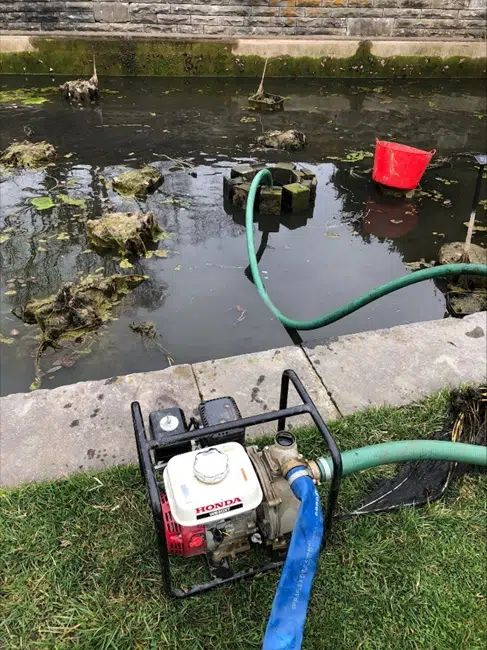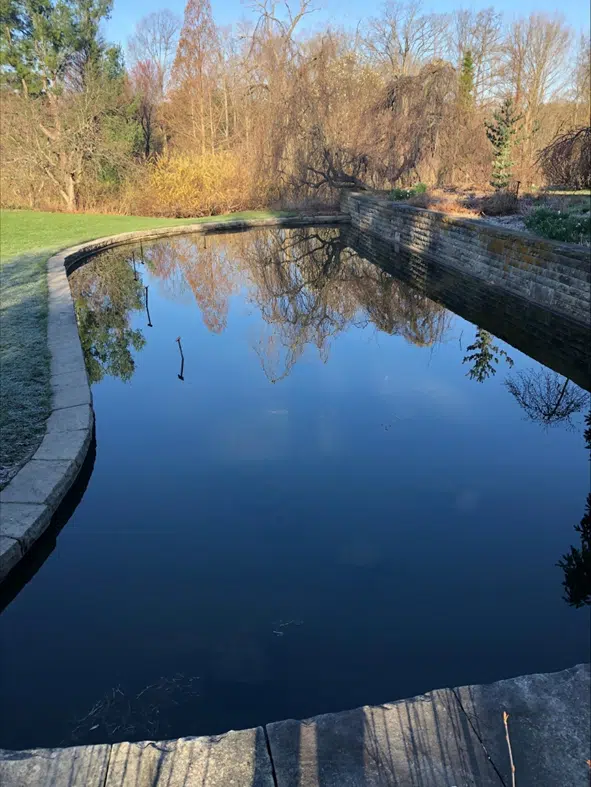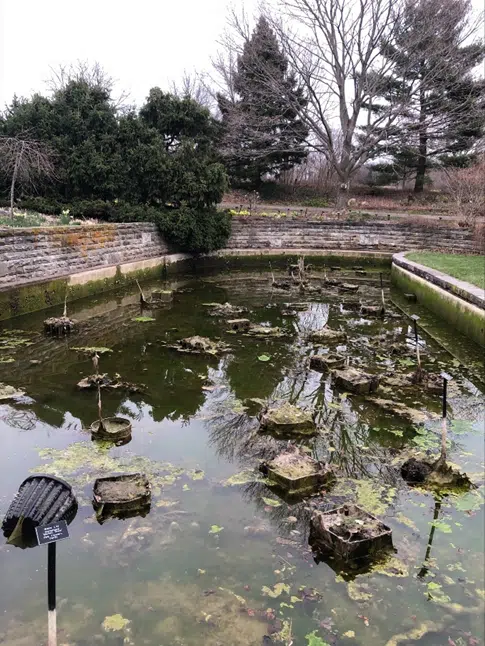
As the weather warms up, we have more to tend to than just our flower beds. The Lily Pool, located in the Main Display Garden near the weeping beech tree (Fagus sylvatica ‘Pendula’), is another feature that requires annual maintenance, but it is messier and stinker than our usual work. This time of year, algae floats to the surface as water temperatures rise and sunlight becomes more abundant. The excess algae, while harmless to the water lilies, detracts from their picturesque beauty. Our job is to remove the algae and gunk that has collected at the bottom to keep the pond in pristine condition.
Getting Started
The cleanup takes more time than one might think. The Lily Pool is filled using spring water through a valve that we can close or open. We first close the valve and let the water in the pond drain through a drainage pipe, which takes about a day. Meanwhile we begin to scoop out the algae that floated its way to the top to prevent it from clogging the pipe. Once the water level has fallen, there is a plug at the bottom of the drainage pipe we remove to further lower the water level. The last remaining two feet of water are then pumped out with a portable pump, but it was a difficult time to say the least. It took three days to get the water down to where we wanted it to be and each time we started in the morning, we could not get the pump to siphon water. After all our head scratching, we figured out the best set up and finished draining just in time for the rest of the horticulture staff to graciously help us out. Hopefully we now understand how to run the pump for the next time we do pond maintenance, fingers crossed.

The Cleanup
For a project this big we usually plan something we call “group work”, which involves all horticulture staff to help with a task and allows us to complete it in less time. We were able to work on the pond for about an hour before mother nature had other plans to storm on us. The next morning we recommitted ourselves to scoop out the rest of the gunk and side walls and wrap-up by dropping a pellet of fertilizer into each lily. Once we were covered with stinky pond muck and satisfied with how everything looked, we reopened the valve and let the pond refill over the weekend. The final step was to add a black, biodegradable dye to the water which helps suppress algae growth and gives the water surface a better reflection. For the remainder of the year, we tend to keep the valve closed so we don’t dilute our dye. Overall, the pond maintenance went great, and it was shocking to see how much cleaner it looked when we returned on Monday.




Danny Wylie
Gardener
Danny Wylie is a Gardener for the Main Display Garden. He began working at Holden Forests & Gardens April 2022. He loves all things plants and is always looking to learn more about them. Outside of work he enjoys hiking, tending to his own collection of exotic plants, and writing.













